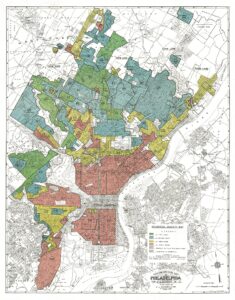Why Black Americans Had To Delineate (FBA)
Since many enslaved African Americans were skilled laborers, immediately after the emancipation of slavery, many African Americans went in search of their loved ones. They immediately tried to create paths that would lead to generational wealth. However, most of their efforts were thwarted by systemic racism, as historian Robin Walker mentions in the video. Below is a listing of the numerous efforts that were made. The point of this page is to explain the purpose of FBA (Foundation of Black Americans) and show that most Black Americans were Pan-Africanist until recently, when other African descendants within the diaspora migrated to the United States and embraced the mainstream narrative. Historian Robin Walker speaks about this around 6:12.
Black Codes & Jim Crow Laws
The laws that governed the behavior of African Americans (both free and freedmen) were known as the Black Codes or Black Laws. In 1832, James Kent stated that “in most of the United States, there is a distinction in respect to political privileges between free white persons and free colored persons of African blood; and in no part of the country do the latter, in point of fact, participate equally with the whites, in the exercise of civil and political rights.” For more information, check out Black Codes.
“Jim Crow” was a derogatory epithet for an African American, and the state and local laws that enforced racial segregation were implemented in the Southern United States in the late 19th and early 20th centuries.
In practice, Jim Crow laws mandated racial segregation in all public facilities in the states of the former Confederate States of America and in some others, beginning in the 1870s. In the 1896 case of Plessy v. Ferguson, the Supreme Court established its “separate but equal” legal theory with regard to facilities for African Americans, upholding Jim Crow legislation. Moreover, public education had essentially been segregated since its establishment in most of the South after the Civil War in 1861–1865. Companion laws excluded almost all African Americans from the vote in the South and deprived them of any representative government. For more information check out Jim Crow laws.
List of expulsions of African Americans
In the United States, at least fifty towns, cities, and counties have forcefully removed African Americans. Although they persisted until 1954, the majority of these expulsions took place in the 60 years after the American Civil War. Although the reasons for the expulsions varied, they frequently had to do with property takeovers, labor disputes, or crimes committed by white Americans.
- Colfax, Louisiana, Massacre (1873)
- Wilmington, North Carolina, Massacre (1898)
- Atlanta Massacre (1906)
- Elaine, Arkansas, Massacre (1919)
- Tulsa, Oklahoma Massacre (1921)
- Rosewood, Florida, Massacre (1923)
For more information check out List of African Americans Expulsions.
COINTELPRO
Between 1956 and 1971, the US Federal Bureau of Investigation (FBI) carried out a number of clandestine and unlawful[1][2] projects known as COINTELPRO (a syllabic acronym derived from Counter Intelligence Program), which were intended to monitor, infiltrate, discredit, and disrupt American political organizations that the FBI believed to be subversive.
The FBI targeted Anti-Vietnam War activists, members of the Black Panther Party, the Nation of Islam, and Martin Luther King Jr., as well as activists in the civil rights and Black power movements, environmentalist and animal rights groups, the American Indian Movement (AIM), Chicano and Mexican-American organizations like the United Farm Workers and the Brown Berets, and independence movements (including Puerto Rican independence groups like the Young Lords and the Puerto Rican Socialist Party) were among the groups and individuals the FBI targeted. For more information check out COINTELPRO.
Redlining

Redlining is a discriminatory practice whereby neighborhoods with a high concentration of racial and ethnic minorities are denied access to financial services.[2] Redlining, which mostly targets African Americans and Mexican Americans in the Southwest, has been most prevalent in the United States.[3] The most prevalent instances include the creation of food deserts in minority neighborhoods, the denial of credit and insurance, and the denial of healthcare. For more information check out Redlining.
CIA involvement in Contra cocaine trafficking
In the mid-1980s, many African American communities were devastated by a new drug known as crack cocaine. During the Nicaraguan civil war in the 1980s, several authors claimed that the US Central Intelligence Agency (CIA) interfered with the Contras’ cocaine trafficking activities in an attempt to provide funding for the Contra organization’s attempt to overthrow the revolutionary Sandinista government. The United States government has conducted investigations into these claims, including hearings and reports by the Senate, House of Representatives, Department of Justice, and CIA’s Office of the Inspector General. These investigations have concluded that the allegations are unfounded. The topic is still debatable.
The allegations of CIA involvement in Contra cocaine trafficking were resurrected in 1996 when reporter Gary Webb’s newspaper series in the San Jose Mercury News asserted that the trafficking was a major contributor to the development of the crack cocaine drug issue in the United States. Webb’s claims were substantiated when Freeway Ricky Ross confirmed that Nicaraguan drug smugglers supplied local drug dealers like himself with cocaine, which was used to fund the Contras’ revolt against Nicaragua’s leftist government. But at the same time, it supplied the cocaine needed to create the low-cost crack cocaine for poor black citizens of Los Angeles.
For more information check out the CIAs Involvement in Drug Trafficking.
